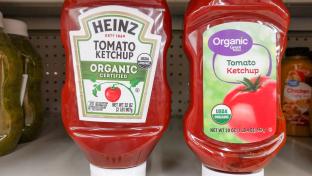How private label brands can influence consumer decisions with shopping list marketing
According to Nielsen, 44% of American households are actively buying food both on and offline.
To meet omnichannel shoppers no matter where and when they search, browse, and purchase
their groceries, brands must ensure they are reaching consumers during critical moments of the
shopping journey.
As a result, private label brands are turning to shopping list marketing as a key strategy to drive
consumers to add promoted products directly to a mobile shopping list or cart. In fact, 95% of
CPG marketers believe that shopping list marketing is a credible way to reach consumers. It is
one of the most impactful strategies in digital advertising to influence consumers’ purchase
decisions and help retailers increase revenue from their private label offerings.
Driving Awareness for Private Label
Shopping list marketing uses digital technology to find a consumer engaged in a product
category and serve them ads while they are planning their next shopping trip. As shoppers add
items to their mobile shopping list or cart, they are served suggestions for products they’re likely
to buy.
Private label brands can promote their products by targeting shoppers that have their category
and similar products on their lists. They can also intercept shoppers who are searching for
relevant keywords. Because the ad looks native to the app and is personalized for the user,
we’ve found that the consumer is 2-3x more likely to click on the promoted product than the
industry average. Not only does this drive awareness for a private label brand, but it also
increases future in-store sales and lasting brand loyalty.
Outperforming Competitors
Did you know there are about half a million brands in more than 2,000 product categories
worldwide competing for consumer dollars? Private label brands face steep competition among
CPG brands and must fight to take their spot in consumers’ shopping baskets.
To win, private label brands can equip themselves with shopping list data to evaluate where
they stand among shoppers. By having insight into both their performance and competitors’
performances, private label brands can maintain an advantage in a crowded marketplace.
Understand Changing Consumer Shopping Habits
As we’ve seen from the pandemic, consumer behavior and preferences are constantly changing
based on the current environment. What’s trending one month, like toilet paper and workout
equipment, can completely change the next month.
To keep up with the latest purchase behavior and trends, private label brands can rely on
shopping list marketing for real-time insights on what is getting added to consumers’ lists or
carts. That way, they can enhance their strategy based on product alignments, category
correlations and more, ultimately knowing what consumers will buy before they purchase their
groceries.
Influencing Shoppers With Shopping List Marketing
Shopping list marketing should be a part of any private label omnichannel strategy, providing
differentiated competitive advantages that benefit retailers’ overall bottom line. By influencing
buyers when they are planning their next purchase, private label brands can get products
directly onto shopping lists and increase market share at critical moments of the consumer
journey.
Molly McFarland, co-founder and Chief Revenue Officer of AdAdapted, offers a unique perspective being a woman in the tech start-up world. A native of Maine and graduate of Tulane, Molly began her career as a marketing professional and has since grown into an impressive, innovative and charismatic founder of a fast-growing advertising platform.





